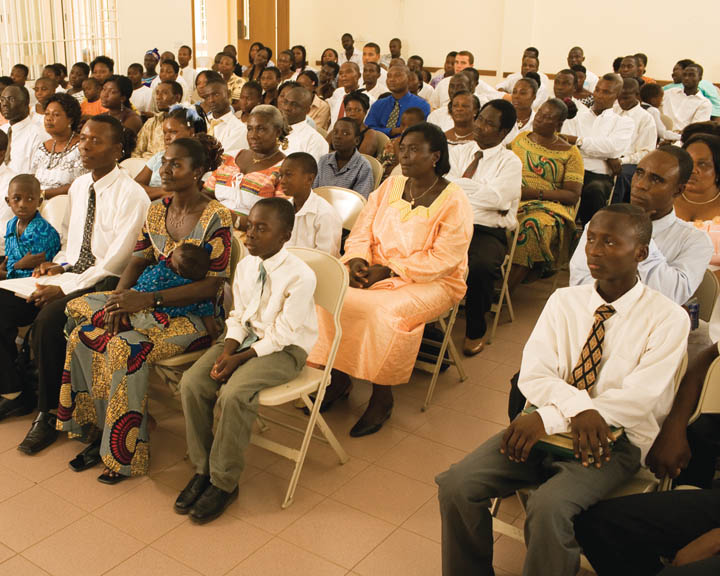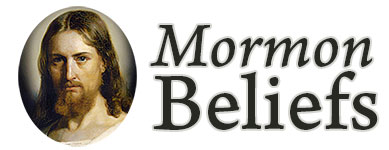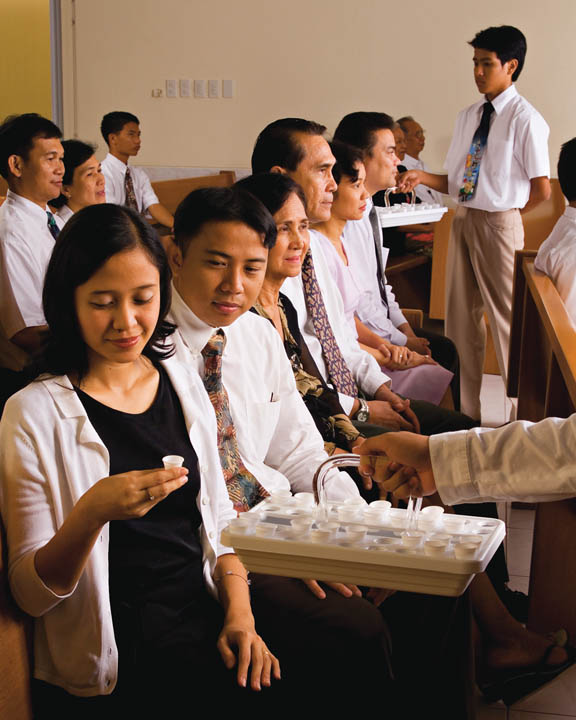Mormon Church Demographics
In April of 2015, statistics were announced for the end of 2014. The announcement was made by the First Presidency of the Church on the occasion of General Conference. As of December 31, 2014 there were 15,372,337 members of the Church worldwide in 29,621 congregations, with the Church publishing resource materials in 189 languages.
From its organization in 1830 with just six members, it took 117 years — until 1947 — for the Church to grow from the initial six members to one million. Missionaries were a feature of the Church from its earliest days, fanning out to Native American lands, to Canada and, in 1837, beyond the North American continent to England. Not long after, missionaries were working on the European continent and as far away as India and the Pacific Islands.
The two-million-member mark was reached just 16 years later, in 1963, and the three-million mark in eight years more. This accelerating growth pattern has continued with about a million new members now being added every three years or less. Growth consists both of convert baptisms (296,803 in 2014) and natural growth through the birth of children (116,409 in 2014).
At the end of 2014 there were 85,147 full-time Mormon missionaries serving in 406 missions worldwide. There were 15 Missionary Training Centers globally. Mormons also may service “service missions” from their homes. There were 30,404 such missionaries.
Since 1985 the Church had contributed humanitarian aid in 185 countries and had nearly 12,000 humanitarian aid missionaries.
The Church had 144 operating temples worldwide and others under construction (29). Three new temples were announced during the April 2015 General Conference, for Abidjan, Ivory Coast; Bangkok, Thailand; and Port au Prince, Haiti.
The Church operated 4 universities and colleges (Brigham Young University, with campuses in Utah, Idaho, and Hawaii, and LDS Business College in Salt Lake City, Utah). There were nearly 400,000 students enrolled in high school seminary classes and about 350,000 students enrolled in college-level institute classes. Both seminary and institute classes teach religious studies, especially the scriptures.
The Church had over 4,800 family history centers in 134 countries, offering help with genealogical research to all comers, regardless of faith.
According to the National Council of Churches, The Church of Jesus Christ of Latter-day Saints is the second-fastest-growing church in the United States. However, despite its increasing numbers, the Church cautions against overemphasis on growth statistics. The Church makes no statistical comparisons with other churches and makes no claim to be the fastest-growing Christian denomination despite frequent news media comments to that effect. Such comparisons rarely take account of a multiplicity of complex factors, including activity rates and death rates, the methodology used in registering or counting members and what factors constitute membership. Growth rates also vary significantly across the world. Additionally, many other factors contribute to the strength of the Church, most especially the devotion and commitment of its members (LDS Newsroom).
In the United States, the Mormon Church is the 4th largest individual denomination with 6,466,267 million members.
Only 12 – 14 percent of all Mormons live in Utah. Most Mormons do not live in the United States.
Aside from the United States, other regions with significant Mormon populations include Mexico (1,368,475) and Asia, with about the same amount; South America, and Central America and Europe. The rapid growth the Church has been experiencing in Africa, where there are already nearly half a million members, is particularly exciting.
After Catholicism, the Mormon Church is the largest sect in ten U.S. states.
One way to classify religions is by grouping them into religious alliances. Religious alliances include those churches with central leadership and doctrinal uniformity (e.g. the Catholic Church) as well as those that lack central leadership. An example of the latter type is the “Assembly of God alliance,” which is comprised of many churches that are generally classified together even though each congregation has autonomy to teach as it pleases.
The LDS Church is the 15th largest religious alliance in the world and the 8th largest international religious alliance.
It is also interesting to consider those religions that are the most ubiquitous (meaning most likely to have a meeting place “near you”).
The LDS Church is the 5th most ubiquitous religious alliance in the world and the 4th most ubiquitous religious body.
 By percentage of population, the Mormon Church has a profound presence in the South Pacific. About 30% of Tongans, and 25% of Samoans and citizens of American Samoa are members of the Church. In America, Utah has the highest percentage of Mormons with about 62%. Idaho, Arizona, and California also have large Mormon populations.
By percentage of population, the Mormon Church has a profound presence in the South Pacific. About 30% of Tongans, and 25% of Samoans and citizens of American Samoa are members of the Church. In America, Utah has the highest percentage of Mormons with about 62%. Idaho, Arizona, and California also have large Mormon populations.
The Church creates about two new congregations every day.
70% of Mormons worldwide were not born into the faith.
The growth of the Mormon Church is among the fastest of any denomination on the planet.
In the last 50 years, membership has increased ten-fold.
For the last 15 years, an average of 800 people have joined the LDS Church every day.
 Absolute growth is greatest in Latin America, but the rate of growth is highest in Africa and the former Soviet bloc.
Absolute growth is greatest in Latin America, but the rate of growth is highest in Africa and the former Soviet bloc.
In 1984, a prominent non-LDS researcher estimated that membership would top 265 million by 2080 and said the Church would be the “first ‘new’ major world religion since Islam.” So far, growth has exceeded his model’s predictions.
Some surveys suggest that the LDS Church has the highest U.S. attendance and service rates. Utah has recently been named as the U.S. state with the highest rate of volunteerism, because church service was counted. Utah also has the highest percentage of citizens who attend church every week.

